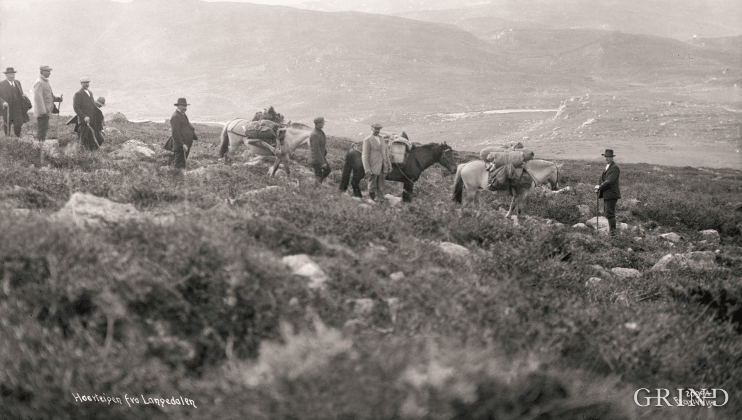Published: 11.11.2015 | Author: Nils Georg Brekke, Ågot Gammersvik
From Espe, Sekse and Lofthus there were roads up to the main tracks across the Hardanger plateau. (A. B. Wilse, eigar: Norsk Folkemuseum (W 20994)).
One of the old “slepa” (tracks) across the Haranger plateau starts from Espe. Here have been horse dealers for many generations. The tracks across the plateau go back to pre-history. Iron from Telemark to the Viking chieftains in the west, horses from Hardanger, tallow to the silver mines at Kongsberg – through many hundreds of years the Hardingslepa and the southern Nordmannslepa were important transport routes. The cattle traders in the 1700s often travelled with large flocks of horses and cattle which were allowed to graze in the mountains before being led to market in the east. There were other farms where the traders left from; Odda, Sekse, Opedal, Huse, Tveisme, Bu, Eidfjord and Sima. They all came up on the mountain pasture tracks from different directions; folk from Eidfjord, Sørfjord, Ulvik, Voss and Sogn. In the later centuries Store Normannsslepa eastwards from Hadlaskard became one of the main thoroughfares.
When the new road across Haukeli came at the end of the 19th C, the traffic across the Hardanger plateau lessened.



